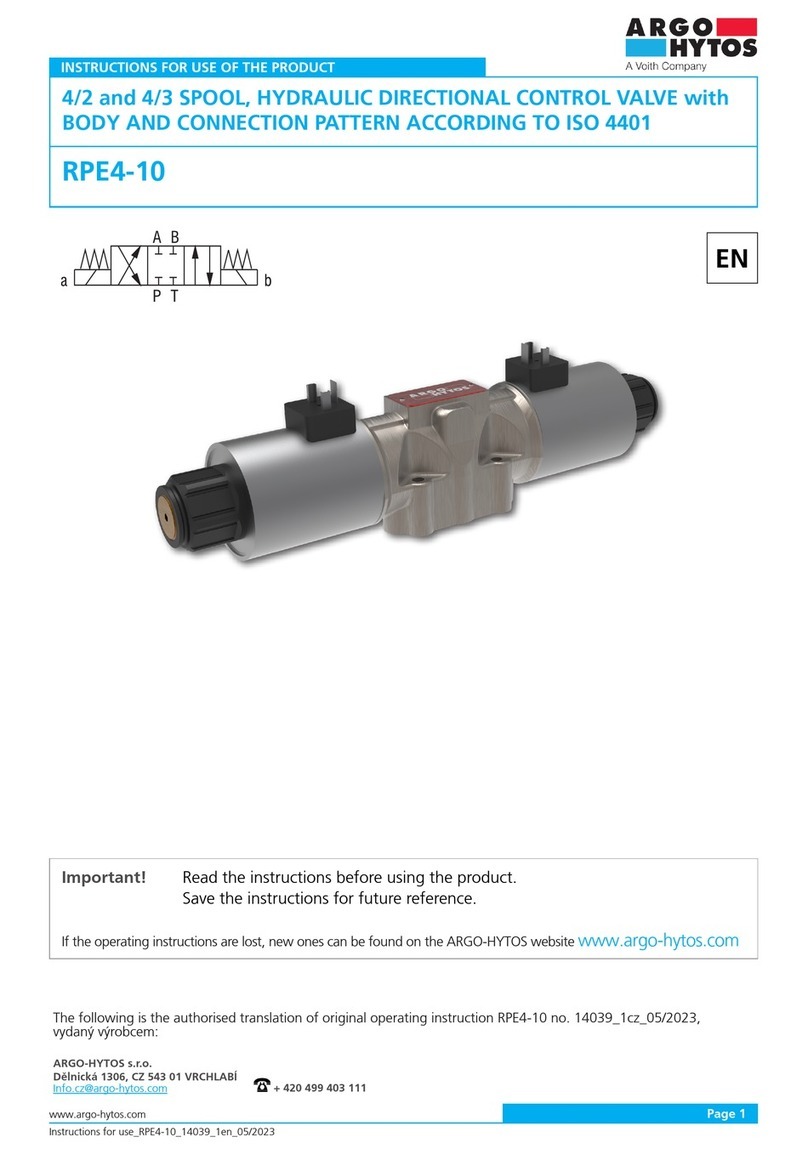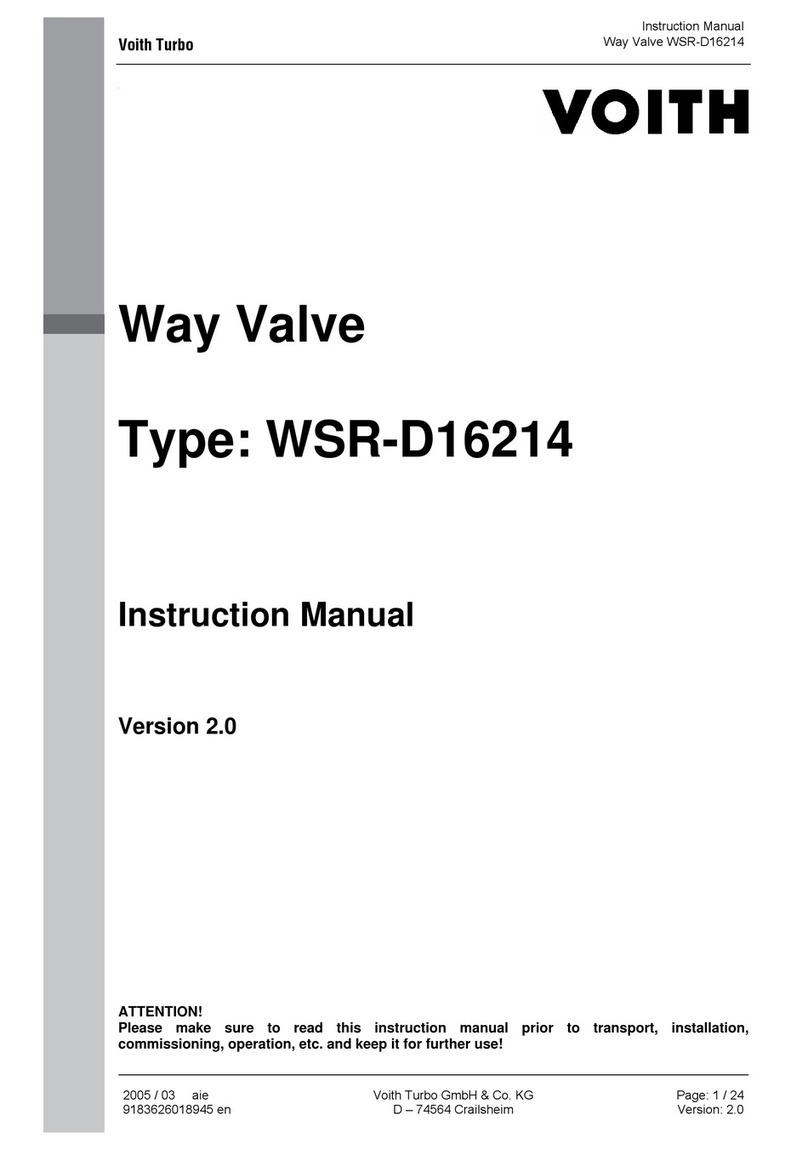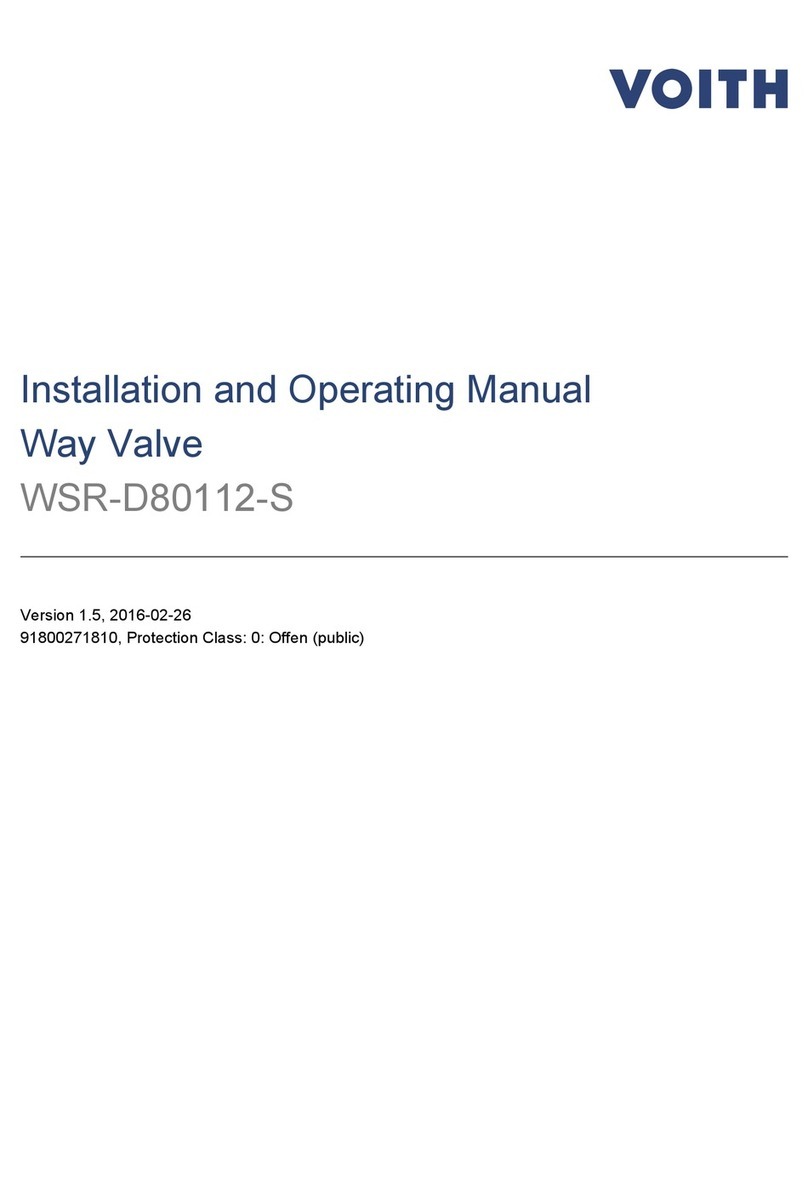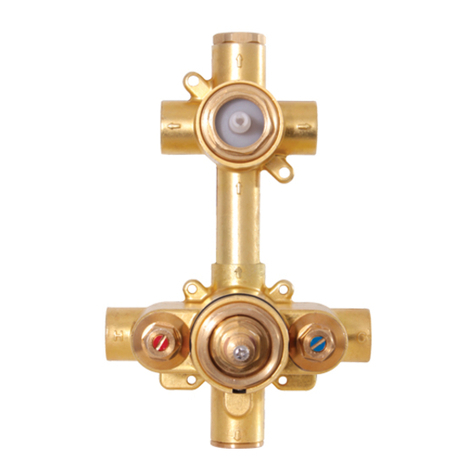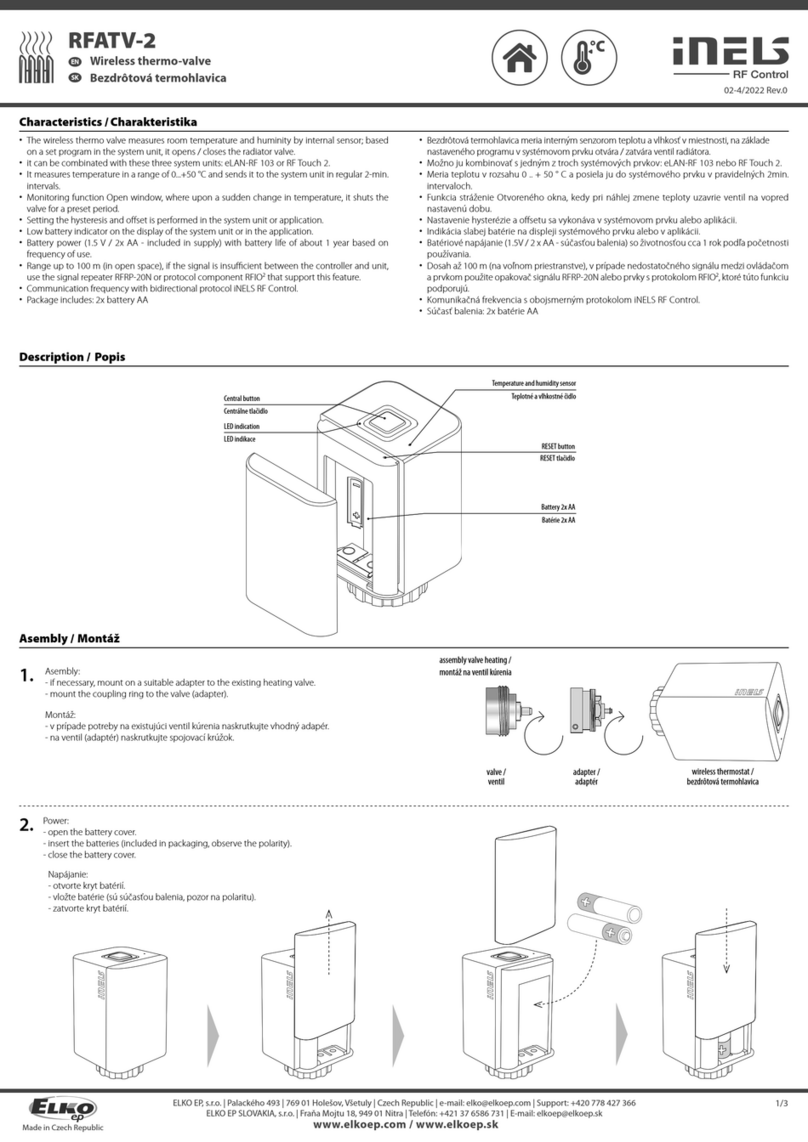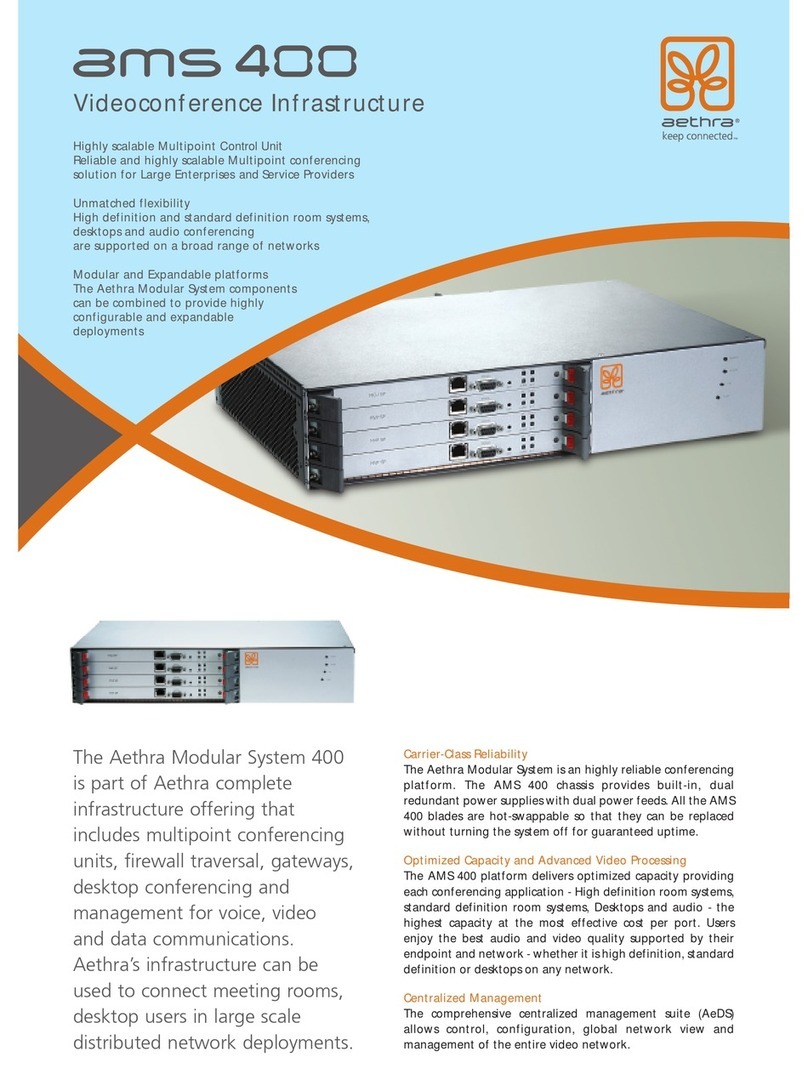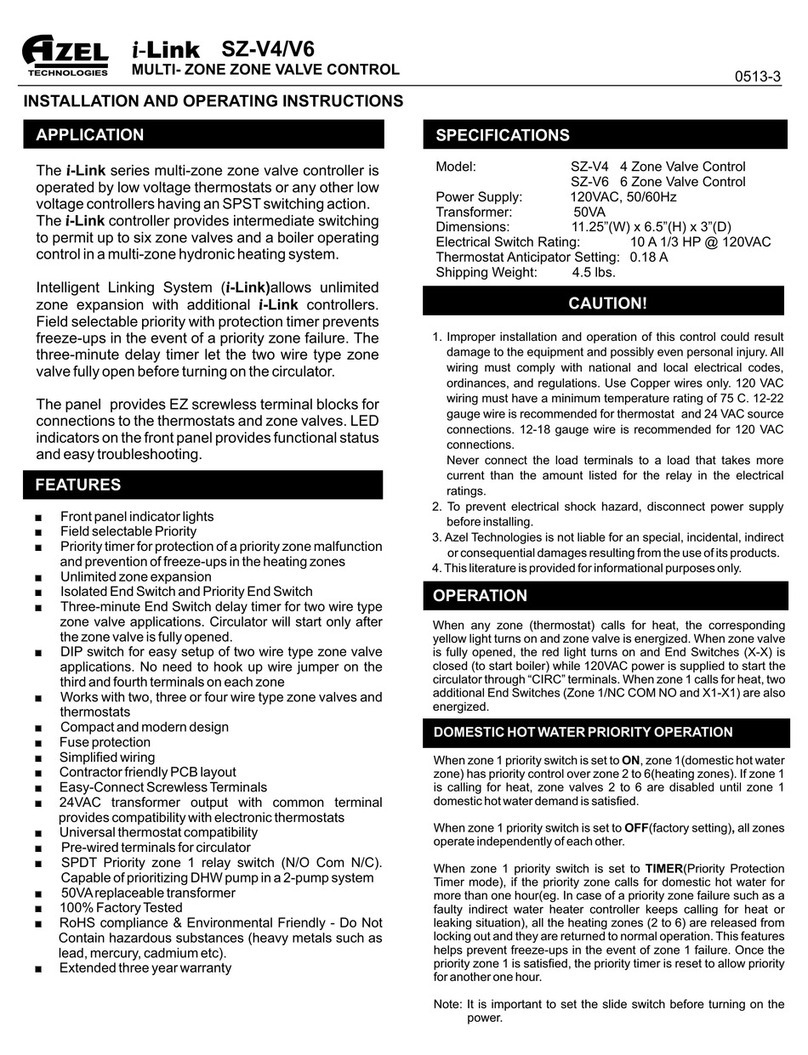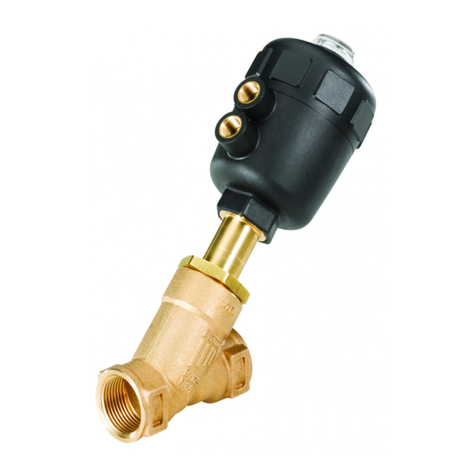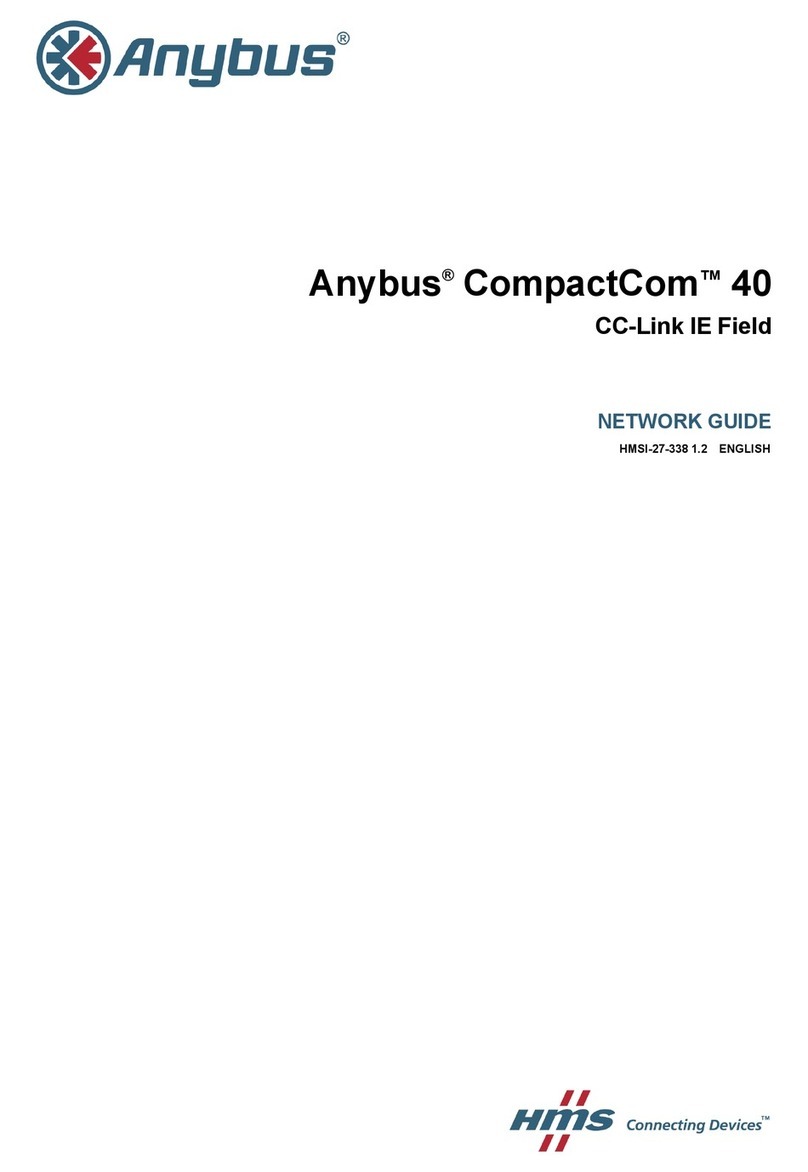Voith WSR-D16212 User manual

Instruction Manual
Voith Turbo Way Valve WSR-D16212
2003 / 07 aie Voith Turbo GmbH & Co. KG Page: 1 / 24
918 3626 018870 en D – 74564 Crailsheim Version: 3.0
7
Way Valve
Type: WSR-D16212
Instruction Manual
Version 3.0
ATTENTION!
Please make sure to read this instruction manual prior to transport, installation,
commissioning, operation, etc. and keep it for further use!

Instruction Manual
Voith Turbo Way Valve WSR-D16212
2003 / 07 aie Voith Turbo GmbH & Co. KG Page: 2 / 24
918 3626 018870 en D – 74564 Crailsheim Version: 3.0
Should you have any questions concerning the way valve, please contact
Voith Turbo GmbH & Co. KG, Crailsheim, After-Sales Service of Product
Group Electronic Drive Systems in Crailsheim, indicating the article
number and the serial number of the way valve.
Voith Turbo GmbH & Co. KG
P.O. Box 15 55
74555 Crailsheim, Germany
Switchboard: +49 - 7951 / 32 - 0
Fax No.: +49 - 7951 / 32 - 500
After-Sales Service of Product Group
Electronic Drive Systems
Direct dial: +49 - 7951 / 32 - 470
Direct fax: +49 - 7951 / 32 - 605
Address for deliveries of goods:
Voith Turbo GmbH & Co. KG
aie Dept.
Voithstraße 1
D-74564 Crailsheim
This instruction manual describes the design standard of the way valve
type WSR-D16212 with delivery as of 2010/01.
Alterations or modifications after delivery are not considered in this
instruction manual.
©Voith Turbo GmbH & Co. KG 2010
This instruction manual is protected by copyright. They cannot be
translated, duplicated (mechanically or electronically) in whole or in part, or
passed on to third parties without the written approval of the publisher.
Revised: 2010 / 01
Order No.: 918 3626 018870 en
Version: 3.0
Printed in Germany

Instruction Manual
Voith Turbo Way Valve WSR-D16212
2003 / 07 aie Voith Turbo GmbH & Co. KG Page: 3 / 24
918 3626 018870 en D – 74564 Crailsheim Version: 3.0
Contents
Instruction Manual
Page
1Technical Data ............................................................................................................................... 4
2Safety Information......................................................................................................................... 6
2.1 Definition of symbols and warnings ......................................................................................... 6
2.2 Proper use................................................................................................................................ 6
2.3 Important information ............................................................................................................... 6
2.4 Warranty................................................................................................................................... 8
3Function.......................................................................................................................................... 9
4Packing, Storage and Transportation........................................................................................ 11
5Installation.................................................................................................................................... 12
5.1 Mounting ................................................................................................................................ 12
5.2 Hydraulic connection.............................................................................................................. 13
5.3 Electrical connection .............................................................................................................. 13
6Commissioning............................................................................................................................ 14
6.1 Test run .................................................................................................................................. 14
6.2 Parameter setting................................................................................................................... 15
6.2.1 Setting the hydraulic center of control piston ............................................................ 16
6.2.2 Setting the proportional gain ..................................................................................... 17
7Operation...................................................................................................................................... 19
7.1 Operation with manual operation knob .................................................................................. 19
7.2 Normal operation ................................................................................................................... 19
7.3 Troubleshooting ..................................................................................................................... 20
8Maintenance, Servicing, and Inspections................................................................................. 22
8.1 Maintenance and servicing .................................................................................................... 22
8.2 Inspections ............................................................................................................................. 23
8.3 Spare parts information.......................................................................................................... 23
9Decommissioning........................................................................................................................ 24
10 Annex............................................................................................................................................ 24

Instruction Manual
Voith Turbo Way Valve WSR-D16212
2003 / 07 aie Voith Turbo GmbH & Co. KG Page: 4 / 24
918 3626 018870 en D – 74564 Crailsheim Version: 3.0
1 Technical Data
Way Valve Type WSR-D16212
Article number 9 1868590
Instruction Manual No. 918 3626 018870
marking1) II 2G IIC T4
Protection IP 65 as per EN 60529
Ambient temperature TAat T4 -30 ... +60 °C
Ambient temperature (storage) -40 ... +90 °C
Installation conditions Indoor installation
Outdoor installation
Offshore
Industr.
atmosph.
Hydraulic Data
Supply pressure P
Nominal pressure 90 bar
Maximum pressure 120 bar
Return pressure T -0.05 … 0.2 bar
Flow rate at P=20bar P -> A,B->T 45 l/min
Operating medium
Type Hydraulic oil to DIN 51524
Turbine oil to DIN 51515
High-flash point fluid3)
Oil temperature during operation +10 … +60 °C
Cleanliness grade (ISO VG 4406) - / 16 / 13
Viscosity (DIN 51519) ISO VG 32 … ISO VG 46
Class 7 as per NAS 1638
Leakage (Toil = 50 °C and nom. pressure) < 5 l/min
Mechanical Data
Design of way valve 3/3 4/3
Installation positions
Sealing material FPM1)
Special design3)
NBR2)
Weight approx. 15 kg
1) Fluor-caoutchouc
2) Acrylnitril-Butadien-caoutchouc
3) According to customer requirements or especially for high-flash point fluids

Instruction Manual
Voith Turbo Way Valve WSR-D16212
2003 / 07 aie Voith Turbo GmbH & Co. KG Page: 5 / 24
918 3626 018870 en D – 74564 Crailsheim Version: 3.0
Electrical Data
Supply voltage 24 (+10% / -15%) V DC
Current consumption 1 A, max. 3 A for t < 1 sec
Electrical connection See Chapter 10
Control Parameters
Setpoint w for stroke 0% … 100% w = 4.0 … 20.0 (load 100 ) mA
Actual value input for stroke 0% ...
100% 20…4 (load 332 ) mA
Actual value remote indication for stroke
0% … 100% 4…20 (load 400 max.) mA
Magnetic force switch-off at w < 2 mA
Magnetic force switch-on at w 3 mA
Input configuration
E432 Electronics
E524 / Electronics
Applied, related to GND
Isolated (500 k)
Setpoint limitation
E432 Electronics
E524 Electronics
E530 Electronics
w > 35
w > 20.2
w > 21
mA
mA
mA

Instruction Manual
Voith Turbo Way Valve WSR-D16212
2003 / 07 aie Voith Turbo GmbH & Co. KG Page: 6 / 24
918 3626 018870 en D – 74564 Crailsheim Version: 3.0
2 Safety Information
2.1 Definition of symbols and warnings
Symbol Damage/harm
to ... Signal word Definition Consequences
Persons,
property
EX-
PROTECTION
!
Indication for Ex-protection
Explosion hazard
Persons DANGER! Imminent danger Fatal or most
serious injuries
(crippling)
Persons WARNING! Dangerous situation possible Fatal or most
serious injuries
possible
Property ATTENTION! Dangerous situation possible Possible damage to
- the product
- its environment
– Note!
Information!
Application details and other
useful information
Efficient in operation
2.2 Proper use
The way valve serves to transform an electric position set signal, e.g. 4 - 20 mA into a flow
rate variable in direction and size. This allows, for example, remote-controlled infinitely
variable adjustment of a hydraulic positioning cylinder for positioning of control valves on
turbo machinery.
2.3 Important information
The following information refers to the entire instruction manual and is to be observed in
addition to the individual instructions.
Accident prevention
It is imperative to observe the requirements of the relevant standards and regulations
when connecting a way valve in explosion-proof design.
There must not be any potentially explosive atmosphere during all works performed,
such as e.g. transportation, storage, installation, electrical connection, commissioning,
test run, maintenance and servicing!
Operating medium leaving/leaking from the way valve may get in contact with hot
machine parts, posing a risk of fire.

Instruction Manual
Voith Turbo Way Valve WSR-D16212
2003 / 07 aie Voith Turbo GmbH & Co. KG Page: 7 / 24
918 3626 018870 en D – 74564 Crailsheim Version: 3.0
On commissioning or operation of the way valve, spraying hydraulic oil may get into the
eyes causing blindness. Wear protective glasses for all works performed on the way
valve.
The way valve module is a hydraulic unit. In case of non-observance, operating
medium being under pressure may leak out. Any improper use may lead to the leakage
of operating medium under pressure, posing a risk to the health and life of the
operating staff. Prior to performing any work on the way valve, switch off the hydraulic
supply system.
During operation, the outer surfaces of the way valve and the hydraulic connecting
lines may become hot due to the operating medium. Any contact may cause injuries
by burning. Prior to performing any work on the way valve, let the way valve cool down.
On commissioning or operation of the way valve, the end of the piston rod directly or
indirectly driven by the way valve may move uncontrolled in case of a failure of the
hydraulic or electric energy, due to malfunctions in the master control or on the way
valve. The movement of the piston rod may pose a risk to individuals and property.
Prior to performing any work on the way valve, switch off the hydraulic and electric
auxiliary energy.
Electric components are integrated in the way valve which may be destroyed, e.g.
during electric welding near the way valve. Prior to performing electric welding near the
way valve, remove all electric connecting lines.
Environmental protection
On assembly, disassembly or improper use of the way valve, operating medium may
leak out. Operating oil getting into the sewage system or open soil causes severe
environmental damages. Collect leaking operating medium and dispose of it in
accordance with the national statutory provisions.
Instruction Manual
The instruction manual contains important information regarding proper handling of the
way valve. Prior to installation and commissioning of the way valve, carefully read the
entire instruction manual and make sure you fully understood its content.
Keep the instruction manual in a place constantly accessible to the operating staff.
In addition to this instruction manual, have the rules governing accident prevention
and environmental protection available and observe the same.
Staff qualification
Only trained and instructed personnel are allowed to work on the way valve. These
personnel must be sufficiently trained, instructed and authorized to properly mount,
operate and maintain the way valve in accordance with the safety standards.
Installation, commissioning and operation have to be performed by a certified
electrician with experience and knowledge in the field of explosion protection.

Instruction Manual
Voith Turbo Way Valve WSR-D16212
2003 / 07 aie Voith Turbo GmbH & Co. KG Page: 8 / 24
918 3626 018870 en D – 74564 Crailsheim Version: 3.0
Physical modifications
Mounting work and structural modifications are not permitted.
The screw fitting of the cable entry on the control magnet (VRM) is protected against
distortion. Do not distort or slacken the screw fitting.
2.4 Warranty
The terms and conditions mentioned in the General Terms and Conditions of Sale
for Industrial Engineering of Voith Turbo GmbH & Co. KG, Crailsheim, shall apply.
Warranty claims are excluded if these are due to one or several of the following causes:
•Improper transportation, storage, installation, connection, commissioning, operation,
maintenance and repair of the way valve.
•Failure to observe the operational and product safety regulations included in this
instruction manual.
•Use of spare parts not approved by Voith Turbo, Crailsheim.
During the warranty period, repairs to the way valve are only to be performed with the
approval of Voith Turbo GmbH & Co. KG, Crailsheim.

Instruction Manual
Voith Turbo Way Valve WSR-D16212
2003 / 07 aie Voith Turbo GmbH & Co. KG Page: 9 / 24
918 3626 018870 en D – 74564 Crailsheim Version: 3.0
3 Function
Design
Fig. 1 Sectional view of way valve
The way valve comprises the main functional units:
1. Control magnet P - input pressure
2. Tappet for power transmission A, B - outputs
3. Potentiometers X0, X1, KPU, KP T - tank return line
4. Potentiometer SF
5. Electrical connection
6. Control housing FMag - magnetic force
7. Control piston FF - spring force
8. Cover
9. Control spring
10. Manual operation knob

Instruction Manual
Voith Turbo Way Valve WSR-D16212
2003 / 07 aie Voith Turbo GmbH & Co. KG Page: 10 / 24
918 3626 018870 en D – 74564 Crailsheim Version: 3.0
Block diagram - way valve
Fig. 2 Block diagram of way valve
P Supply pressure
A,B Outputs
T Tank return line
w Setpoint for position s 4..20 mA ∼0..100 %
x Actual value feedback 20..4 mA ∼0..100 %
ix Actual value remote indication 4..20 mA ~ 0..100 %
Adjusting parameters X0, X1, KP, FM and TD
F0 and F1 are set at the factory
The positioner and the magnetic force controller are integrated in the control magnet VRM.
The main control parameters can be adjusted at the VRM from the outside via
potentiometers, thus allowing optimum adjustment of the control for various cylinders and
allocation of the required stroke range to setpoint w.
Control deviation w-x is multiplied by KP gain in the positioner. The actuating variable
hereby generated acts as setpoint for the subordinate magnetic force controller. A power
range for FMag is allocated the actuating variable range via parameters F0 and F1 by
means of which the control piston can be moved towards the control spring in defined final
positions. The final positions correspond to the biggest throughflow cross sections of P →
A, B oder von A, B →T.
The position of the control piston marked in Fig. 1 is designated as hydraulic center in
which the throughflow cross sections are virtually zero and the cylinder has taken a
constant position s. To avoid a generation of the magnetic force, that is required for the
hydraulic center, by a system deviation, a magnetic force offset is set with parameter PM
so that the system deviation becomes zero and the setpoint w becomes equal to the actual
value s or x.
FF
+
4/3-Wegeschieber
Regelmagnet VRM
Positionsregler
-PD -
+
Magnetkraftregler
⎢xd ⎢> ⎢xdzul ⎢
ix
KP,TDX1X0 FMF0F1 doppeltwirkender
Zylinder
A
T
P
w
xs
iAUFs
FMag B

Instruction Manual
Voith Turbo Way Valve WSR-D16212
2003 / 07 aie Voith Turbo GmbH & Co. KG Page: 11 / 24
918 3626 018870 en D – 74564 Crailsheim Version: 3.0
Function of manual operation knob:
Instead of the magnetic force FMag, a force can be set that is transmitted to the control
piston via the tappet.
This way, the control piston can be moved without electric connection and to connect
output A with P or T.
Thus, the piston rod on a cylinder connected on output A can be moved to the
corresponding final position. It is not possible to set to any position s.
4 Packing, Storage and Transportation
Packaging
The way valve is supplied in special packaging. All hydraulic connection openings are
sealed with protective plugs.
Storage and preservation
A galvanic corrosion protection will be applied to the outer surfaces of the way valve. On
delivery, the inner parts of the way valve which are not surface-coated are moistened with
preservation oil.
Within Europe, this preservation is sufficient as corrosion protection for about 8
months, provided the way valve is stored in a dry location.
If it is intended to store the way valve for a longer period of time, special precautions have
to be taken. Coordinate such precautions for each individual case with Voith Turbo GmbH
& Co. KG, Crailsheim.
The ambient conditions for storage must be within the limits indicated in Chapter 1.
Transportation
It is not allowed to transport the way valve in an explosive atmosphere! This also
applies to the transportation of spare parts!
Improper transportation or lifting of the way valve may cause damage to property and
personal injuries.
Observe, in particular, that constraining forces do not act on the cable entry of the
control magnet (VRM) and that the connecting line is not damaged.
For transportation purposes, it is not allowed to keep the way valve connected to the
connecting line.

Instruction Manual
Voith Turbo Way Valve WSR-D16212
2003 / 07 aie Voith Turbo GmbH & Co. KG Page: 12 / 24
918 3626 018870 en D – 74564 Crailsheim Version: 3.0
5 Installation
Installation and operation of the way valve is only allowed for the conditions stated in
Chapter 1.
Do not install the way valve in an explosive atmosphere!
During operation, explosive atmosphere may get into the way valve via the tank.
Therefore, the hydraulic tank must not be set up in zone 0.
Only personnel satisfying the qualifications according to Section 2.3 are allowed to
work on the way valve.
Improper installation of the way valve may cause malfunctioning and premature failure
of the way valve.
Cleanliness is imperative during both installation and connection. Prevent any
impurities (dust, metal chips, etc.) from getting into the interior of the way valve or into
the piping system. Any such impurities may cause damage to the way valve.
During the installation period, cover and protect the way valve and, in particular, the
electric and hydraulic connections.
5.1 Mounting
All work may only be performed in de-energized condition and with the oil supply
system switched off. During installation, the oil and power supply for the way valve has
to be secured against unintentional switching-on.
Mount the way valve according to the permissible installation position.
Recommended fastening bolts
2 socket head screws M12, ISO 4762, property class 8.8. Tightening torque MA = 80
Nm, thread oil-moistened. Select the screw length according to the installation situation

Instruction Manual
Voith Turbo Way Valve WSR-D16212
2003 / 07 aie Voith Turbo GmbH & Co. KG Page: 13 / 24
918 3626 018870 en D – 74564 Crailsheim Version: 3.0
5.2 Hydraulic connection
Wear protective glasses when connecting the way valve hydraulically.
Pay attention to the correct pressure stage when selecting pipes, flexible tubes, unions
and flanges.
Immediately replace any damaged pipes and flexible tubes.
When assembling the pipes, ensure that they are not fastened to any moving equipment,
but rather to fixed structures free from vibration.
Alterations in length caused by temperature variations must not apply constraining forces
to the way valve.
Fixing and hydraulic connection to a connecting flange is made via the hydraulic part.
Kant seal rings are used for sealing. The customer's connecting flange must
correspond to Ra 1.6 µm and Rmax 6.3 µm.
Residual oil (up to 0.3 l) may leak when removing the screw plugs. Collect the oil in a
suitable container and dispose it off properly.
Do not use fibrous or hardening sealing compounds, such as hemp or mastic to seal
the connections and pipe unions.
Prior to installation, clean pipes from dirt, cinder, sand, chips, etc.
Pickle welded pipes. Clean and flush carefully the pipes and the whole hydraulic system
before installing the way valve.
5.3 Electrical connection
Only a certified electrician with experience and knowledge in the field of explosion
protection is allowed to connect the servomotor electrically in accordance with the
electro-technical rules and legal provisions of the country of manufacture.
Signal and supply lines provided by the customer to the way valve need to be
screened and laid separately from each other.
When connecting the customer's lines, please avoid parallel running of way valve lines
with the lines of the current converter assemblies.
Poor connecting points do not guarantee a reliable operation of the way valve.
Connect the way valve according to the connection diagram (see Chapter 10, annex).

Instruction Manual
Voith Turbo Way Valve WSR-D16212
2003 / 07 aie Voith Turbo GmbH & Co. KG Page: 14 / 24
918 3626 018870 en D – 74564 Crailsheim Version: 3.0
6 Commissioning
Prior to delivery, the way valve has been tested and adjusted at Voith Turbo GmbH &
Co. KG. The settings are documented in the supplied test report. It must be ensured
that the signal of the position pickup coming from the cylinder is falling, i.e. 0%...100%
stroke correspond to 20 mA...4 mA.
On commissioning, please check all connections of the hydraulic and electric supply
systems. Commissioning must only be continued after ensuring that all hydraulic and
electric connections have been properly wired.
6.1 Test run
Make sure that there is no explosive atmosphere during the test run and the de-
aeration process!
Prior to the test run, please ensure that the pipes and the hydraulic system have been
cleaned. The operating medium must correspond to the cleanliness grade stated in
Chapter 1. Cleaning and flushing operations essential to the operating medium must
not be performed with the hydraulically connected way valve. Operation of the way
valve with contaminated operating medium is not permitted and may damage the way
valve.
•Check the line installation, connection and flow direction to and on the way valve.
•Check the electrical connection.
•Switch on the oil supply and check the supply pressure.
•Switch on power supply.
•Predefine setpoint w = 4 mA and check the reaction of the consumer connected to
output A.
First, due to lacking hydraulic damping, uncontrolled stroke movements of the
consumer connected to output A and B may occur.
If installed in the proper position, the air included escapes and the damping becomes
effective.

Instruction Manual
Voith Turbo Way Valve WSR-D16212
2003 / 07 aie Voith Turbo GmbH & Co. KG Page: 15 / 24
918 3626 018870 en D – 74564 Crailsheim Version: 3.0
How to de-aerate the hydraulic system
•Enter w = 4...20 mA and check the reaction of the consumer connected to output "A"
and "B".
•Run the way vale until it has reached operating temperature and check the supply
pressure.
•Enter setpoint w = 12 mA.
Check the deviation between setpoint and actual value remote indication and, if
necessary, correct the hydraulic center with parameter FM.
See Chapter 6.2.1.
•Vary the setpoint w from 4 to 20 mA. Check the stroke setting and correct it by
potentiometers X0 and X1, if necessary.
See Chapter 6.2.2.
Do not stay in the dangerous zone of the cylinder during the de-aeration process if no
protective device is installed!
If with the piston to be positioned a valve is adjusted, for instance, on connection it has
to be ensured that in 0% position the valve stop and not the inner stop of the piston is
started in the actuator.
•Preset setpoint step-change in closing direction (e.g.: 18 →6 mA).
Check the step-response and, if necessary, optimize
with potentiometer KP and TD.
See Chapter 6.2.3.
During the test run, check all hydraulic connections for leaks. In case of leaks,
immediately switch off the hydraulic supply and remedy the leakage.
6.2 Parameter setting
Due to unintentional maladjustment of the parameters or changed operating
conditions, one or both parameters may have to be readjusted. We recommend
documenting the adjustment of the parameters as well as the set values.
The parameters are adjusted by means of potentiometers X0, X1, FM, KP and SF.
If the cover is removed, explosion protection is no longer guaranteed. Therefore, check
that there is no explosive atmosphere or may form as long as the end cover is not
mounted and secured by the screws.
The cylindrical part of the end cover and the housing bore form part of the flameproof
enclosure for explosion protection. The cylindrical surface of the end cover and the
associated surface of the housing bore must not be damaged. The corrosion protection
of these surfaces needs to remain complete.

Instruction Manual
Voith Turbo Way Valve WSR-D16212
2003 / 07 aie Voith Turbo GmbH & Co. KG Page: 16 / 24
918 3626 018870 en D – 74564 Crailsheim Version: 3.0
Potentiometer: Parameter description:
FM Setting of hydraulic center of control piston
X0 Setting of position s at setpoint w = 4 mA
X1 Setting of position s at setpoint w = 20 mA
KP Setting of proportional gain of positioner
TD Setting of actual value difference of positioner
X0 must be adjusted before adjusting X1.
Potentiometers F0 and F1 are set at the factory and must not be adjusted.
For position of potentiometer, see Chapter 10.
6.2.1 Setting the hydraulic center of control piston
To avoid a deviation between the setpoint and the actual value remote indication, a
magnetic force offset is adjusted by potentiometer FM.
This offset is selected so that the control deviation is zero at setpoint w = 12 mA and the
control piston is in the hydraulic center. For setpoints of w ¹ 12 mA, minor deviations to
the actual value remote indication may occur.
•Run the way valve until it has reached operating temperature and check the feed
pressure.
•Predefine setpoint w = 12.00 mA with a power source.
•Measure the actual value remote indication and set to 12 +/- 0.05 mA
with potentiometer FM.
Effective direction of FM:
The magnetic force or actual position remote indication increases by turning the
potentiometer clockwise.
Stroke setting
Fig. 3 Stroke setting
0
420
100
X1
mech. Anschlag
im Zylinder
mech. Anschlag
im Zylinder
Hubeinstellung
Sollwert [mA]
Hub [%]
X0

Instruction Manual
Voith Turbo Way Valve WSR-D16212
2003 / 07 aie Voith Turbo GmbH & Co. KG Page: 17 / 24
918 3626 018870 en D – 74564 Crailsheim Version: 3.0
With potentiometers X0 and X1, an effective stroke of the piston from a hydraulic cylinder
can be allocated to setpoint 4..20 mA.
The regulating ranges of the potentiometers are defined differently:
Adjusting range X0: +/- 5 %
Adjusting range X1: +/- 5 %
The data refer to the falling signal of the position feedback 20..4 mA ≈0..100 % stroke.
Stroke setting 0 %:
•Predefine setpoint w = 4.0 mA with a power source.
•Set 0 % position using potentiometer X0 and observe
position x and the actual value remote indication.
Should the actual value remote indication increase permanently, i.e. greater than 4
mA when adjusting the potentiometer X0 counterclockwise, the lower mechanical
stop (on valve adjustment usually the valve seat) is reached and the regulating range
exceeded.
In order to reach the "closed position" of a valve safely at a setpoint of 4 mA, even at
thermal linear expansion or drifting of a signal, the stroke may also be adjusted at a
setpoint of e.g. 4.5 mA.
Effective direction of X0:
The piston moves towards 100 % by turning
the potentiometer clockwise.
Stroke setting 100 %:
•Predefine setpoint w = 20.0 mA with a power source.
•Set 100 % position using potentiometer X1 and observe position s and the actual value
remote indication.
Should the actual value remote indication increase permanently, i.e. less than 4 mA
when adjusting potentiometer X1 clockwise, the upper mechanical stop is reached
and the regulating range exceeded.
Effective direction of X1:
The piston moves towards 100 % by turning
the potentiometer clockwise.
6.2.2 Setting the proportional gain
The control parameters on the way valve are preset by the factory.
After mounting on a cylinder, the control parameters need to be adapted on the jobsite
under real operating conditions.
•Predefine setpoint step-change from 18 →6 mA.
•Observe the time-dependent course of the actual value x in the control room.
•Vary the gain with potentiometer KP until the time-dependent course of the actual value
corresponds to characteristic curve 2 in Fig. 4.

Instruction Manual
Voith Turbo Way Valve WSR-D16212
2003 / 07 aie Voith Turbo GmbH & Co. KG Page: 18 / 24
918 3626 018870 en D – 74564 Crailsheim Version: 3.0
Effective direction of KP:
The proportional gain is increased by turning the potentiometer clockwise.
Even if the closing and opening times with a KP set to a low value seem to be
sufficient, nevertheless, adjust the KP according to the procedure described above.
Advantage
Better dynamic behavior in case of minor setpoint changes and lower deviation
between the setpoint and the actual position remote indication.
After optimizing KP, repeat the adjustment of FM, X0 and X1, if necessary.
Only trained commissioning personnel is allowed to perform optimizations with
potentiometer TD.
It is vital to observe the notes contained in Chapter 6.2 for the removal and mounting of
the cover.
Fig. 4
KP
18
6
t
t
Istwert X [mA]
Sollwert W [mA]
1 2 3
18
6

Instruction Manual
Voith Turbo Way Valve WSR-D16212
2003 / 07 aie Voith Turbo GmbH & Co. KG Page: 19 / 24
918 3626 018870 en D – 74564 Crailsheim Version: 3.0
7 Operation
7.1 Operation with manual operation knob
The operation with the manual operation knob enables the manual positioning of the
actuator without electrical connection of the way valve.
While operating with the manual operation knob, do not stay in the danger zone of the
actuator if no protective device is mounted!
Manual operation is only possible when the circlip was removed before. On completion
of operation with manual operation knob, move the manual operation knob to its end
position by turning it counterclockwise and lock it by pushing in the circlip.
Move the piston of actuator from 0% to end position 100%:
•Slowly adjust the manual operation know by turning it clockwise.
•Observe the piston. When the piston moves, stop clockwise rotation.
•The piston moves uncontrolled into 100% end position.
Move the piston of actuator from 100% to end position 0%:
•Proceeding from the above-mentioned position, slowly adjust the manual operation
knob by turning it counterclockwise.
•Observe the piston. When the piston moves, stop counterclockwise rotation.
•The piston moves uncontrolled into 0% end position.
7.2 Normal operation
During normal operation, the way valve is operated with an external position setpoint.
If the way valve does not work as expected, normal operation is interrupted. To remedy the
malfunction, troubleshooting activities are required.

Instruction Manual
Voith Turbo Way Valve WSR-D16212
2003 / 07 aie Voith Turbo GmbH & Co. KG Page: 20 / 24
918 3626 018870 en D – 74564 Crailsheim Version: 3.0
7.3 Troubleshooting
Troubleshooting must only be performed in a non-hazardous atmosphere.
Prior to starting the work, make sure that the way valve was installed electrically and
hydraulically according to the information provided in Chapter 5 and properly
commissioned according to the information provided in Chapter 6.
Malfunction Possible cause(s) Remedy
The piston rod
shows temporary
stroke variations.
Air pockets and/or lack of
damping
De-aerate the way valve as per Chapter 6.1.
Precondition:
Disconnect external setpoint and connec
t
setpoint source directly to the way valve.
Electrical fault on the
connecting cable and/or
vibration of the master
controller
Establish precondition and enter a constan
t
setpoint. If a stroke variation does no longe
r
occur, check the connecting line and/or the
master controller for malfunctions and/o
r
defects.
Proportional gain set too high Establish precondition and realize setpoint step
-
changes. If this causes periodic stroke
variations, readjust the gain. See Chapter 6.2.3.
The piston rod
shows periodical
stroke variations
There is mechanical friction
in the slide valve.
Establish precondition. Enter setpoint w 0 8 mm
for t = 30 sec. Then increase the setpoint in one
step to 8.5 mA and keep it constant for 30 sec. I
f
the stroke varies in one of the two phases,
ingress of dirt into the slide valve may be the
cause. Open slide valve and clean interior parts.
In case of damage to the control edges and
surfaces, completely replace the way valve.
Piston rod shows
sporadic stroke
variations
Connecting fault and/or
defective electric lines
Connect setpoint source directly to the way
valve. If this remedies the malfunction, check the
electric line.
Defect in the Voith control
magnet
Connect setpoint source directly to the way
valve. If malfunctioning still continues, replace
the control magnet.
Table of contents
Other Voith Control Unit manuals
Popular Control Unit manuals by other brands

Ebyte
Ebyte E78-400M22S user manual

Cisco
Cisco TelePresence MCU 4200 Series Getting started
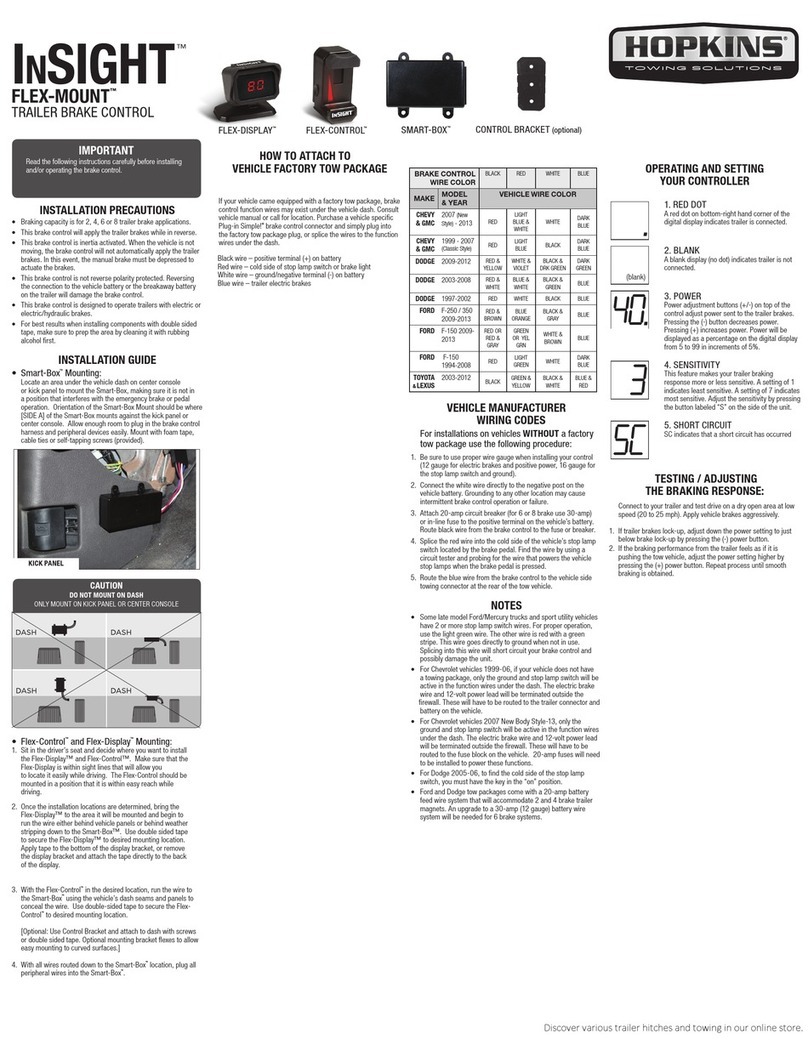
Hopkins
Hopkins InSIGHT installation guide
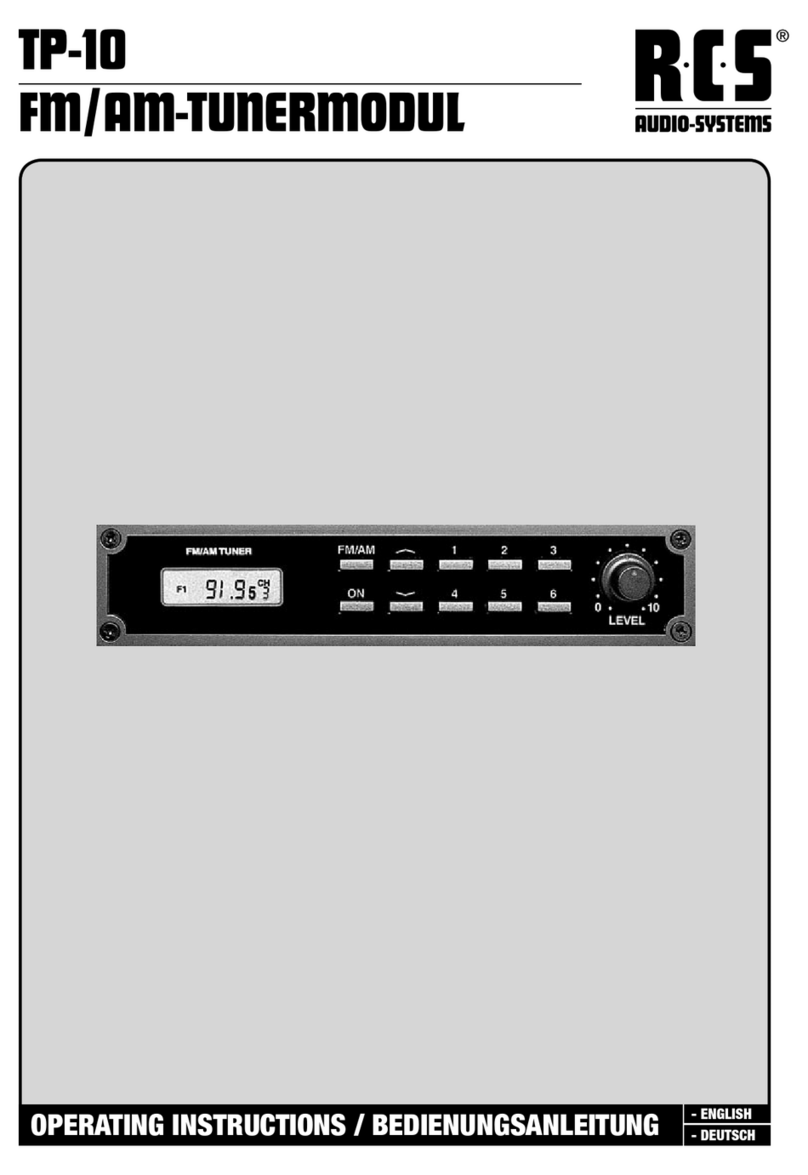
RCS AUDIO-SYSTEMS
RCS AUDIO-SYSTEMS TP-10 operating instructions
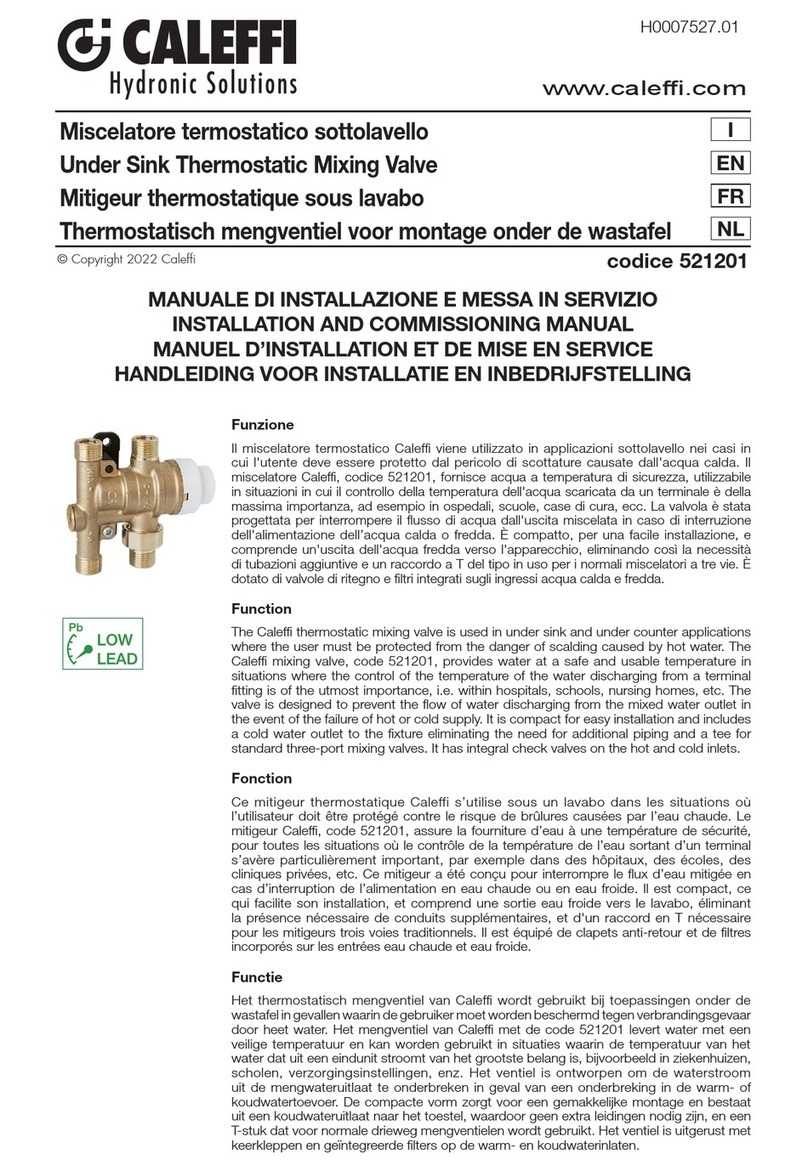
CALEFFI
CALEFFI 521201 Installation and commissioning manual
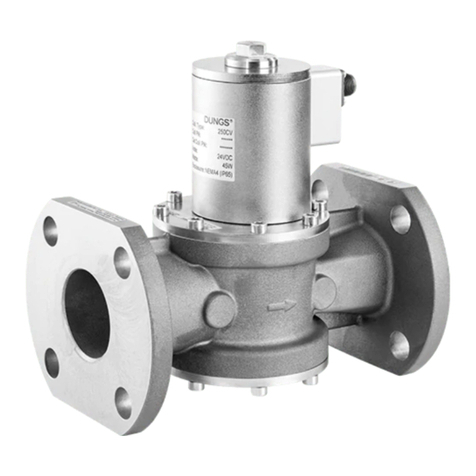
Dungs
Dungs HPSV 10020/604 installation instructions
